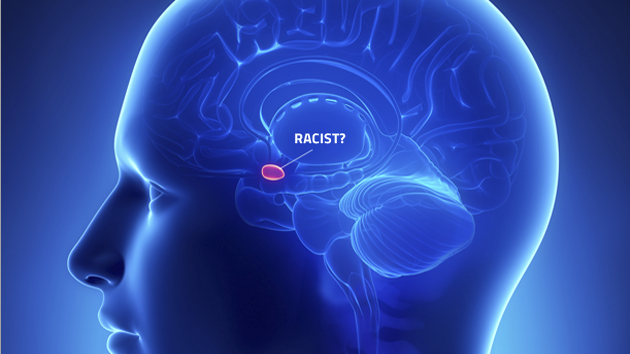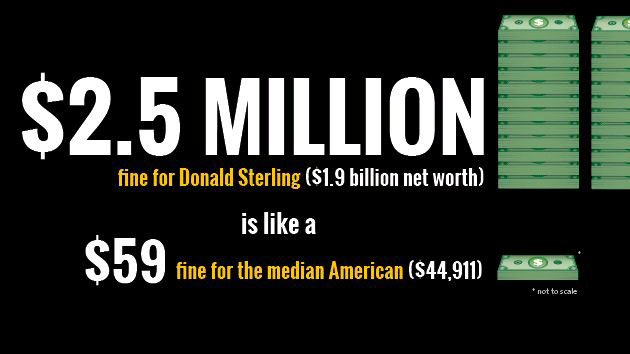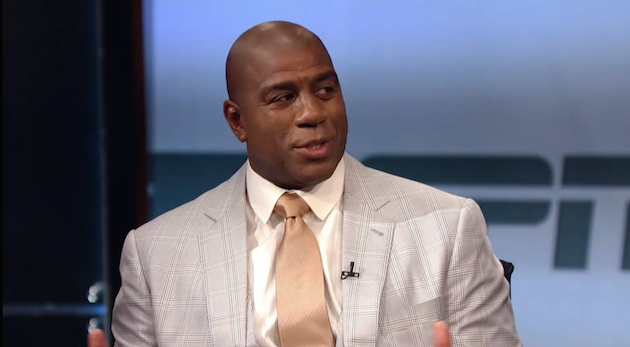
The amygdala<a href="http://www.shutterstock.com/pic-103381406/stock-photo-human-brain-amygdala-cross-section.html?src=lC-F-_dLu_KbwBeqWTi9ug-1-0">CLIPAREA</a>/Shutterstock
When the audio of Los Angeles Clippers owner Donald Sterling telling a female friend not to “bring black people” to his team’s games hit the internet, the condemnations were immediate. It was clear to all that Sterling was a racist, and the punishment was swift: The NBA banned him for life. It was, you might say, a pretty straightforward case.
When you take a look at the emerging science of what motivates people to behave in a racist or prejudiced way, though, matters quickly grow complicated. In fact, if there’s one cornerstone finding when it comes to the psychological underpinnings of prejudice, it’s that out-and-out or “explicit” racists—like Sterling—are just one part of the story. Perhaps far more common are cases of so-called “implicit” prejudice, where people harbor subconscious biases, of which they may not even be aware, but that come out in controlled psychology experiments.
Much of the time, these are not the sort of people whom we would normally think of as racists. “They might say they think it’s wrong to be prejudiced,” explains New York University neuroscientist David Amodio, an expert on the psychology of intergroup bias. Amodio says that white participants in his studies “might write down on a questionnaire that they are positive in their attitudes towards black people…but when you give them a behavioral measure, of how they respond to pictures of black people, compared with white people, that’s when we start to see the effects come out.” You can listen to our interview with Amodio on the Inquiring Minds podcast below:
Welcome to the world of implicit racial biases, which research suggests are all around us, and which can be very difficult for even the most well-intentioned person to control. But that doesn’t mean we can’t do anything about them: We can draw attention to the insidious nature of these subconscious influences, and we can work to prevent them from exerting harmful effects not only on interpersonal behavior, but also on policy, employment practices, and public life. That’s what Amodio’s research (and that of many other social psychologists and neuroscientists who study prejudice) is centrally aimed at achieving.

How do we know implicit biases exist? In a number of classic studies, research subjects are asked to complete a seemingly simple task, such as watching words pop up on a screen and quickly categorizing those words as either positive, like “happy,” or negative, like “fear.” But right before the word appears, a face, either black or white, flashes on the screen. “What we find over and over again in the literature,” explains Amodio, “is that if a black person’s face was shown really quickly, then people are quicker at categorizing negative words than positive words that follow it. Versus if a white face was shown really quickly, people are usually quicker to categorize the positive words, compared with the negative words.”
These types of biases are quite prevalent. According to a research summary by Stanford University’s Recruitment to Expand Diversity and Excellence program, “about 75% of whites and Asians demonstrated an implicit bias in favor of whites compared to blacks.” In other words, despite your best intentions, you might be a little bit racist. (Similar unconscious biases have been documented in people’s views of those of different genders, the elderly, and other groups.)
And why do these split-second negative responses exist? The underlying problem is that our brains have evolved to see patterns in things that are complex, and to categorize the world in order to simplify it. Thus, when we encounter another person, our brains rapidly and subconsciously try to figure out if he or she is friend or foe: in-group or out-group.
We make these calculations based on many factors, but if we know very little about the person, we often categorize her based on race. What tells us how to do so? The culture in which we live. According to Amodio, while a general categorizing tendency has been with us for “as long as there has been a human mind,” the specific categories that we use—Latino, black, white, Asian American, and so on—and how we feel about them, are a social phenomenon. As such, they’re heavily shaped by the strong prevalence of stereotypes in our society, stereotypes that are so common that even children pick them up at a very young age.
And thus, while our society has made progress when it comes to matters of race, subliminal categorization tendencies still permeate human behavior. This much has been demonstrated in the lab multiple times, but here are some noteworthy findings on the psychology of implicit racial bias:
1. Associating skin color with physical, rather than mental, abilities: In a 2006 study of more than 150 white college students, Amodio and his colleague Patricia Devine asked them to categorize words as either pleasant (such as “peace,” “heaven,” and “honor”) or unpleasant (“cancer,” “vomit,” “poverty”) and as either mental (“math,” “brainy,” “scientist”) or physical (“basketball,” “agile,” “dance”). Before each categorization task, the subjects were shown black or white faces. The result? These largely liberal college students were faster at categorizing unpleasant and physical words when shown a black face, and faster at categorizing pleasant and mental words when they were preceded by a white face. Once again, implicit biases shone through in the results.
2. Keeping their distance: Amodio and Devine then went a step further, seeking to identify other ways in which a subtle bias against members of a different race might manifest themselves. So in a new experiment, they told study participants that they were going to work, with a partner, to answer a variety of questions. In fact, when the subjects first arrived for the study, their name was called out along with that of their supposed partner (who had not yet arrived). The partner’s name was either “Tyrone Washington” or “Darnell Stewart.”
After this cue had been planted, the participants were then asked to decide which study tasks they would do and which their partner should do, after being informed that some of the tasks involved answering questions similar to those found in the math and verbal sections of the SATs, and others involved answering questions about sports and popular culture. Sure enough, study participants who had shown higher implicit bias were more likely to assign their (presumably black) partner to answer the questions about sports and popular culture, rather than academics.
But that was just the beginning: Then the study subjects were taken to a waiting room, and told that their partner had arrived but had just gone to the bathroom. A coat and backpack, supposedly belonging to the partner, was placed on a chair and the study participant was told to sit and wait. Once again, the unconscious bias came out: Subjects who had ranked higher on implicit biases now showed different seating choices. “They’ll sit further, in a row of chairs, away from the jacket and backpack of what they think is a black person,” says Amodio.
3. Not voting for Obama: In a very different context, these tendencies also cropped up in the 2008 presidential election, pitting a white candidate (John McCain) against a black one (Barack Obama). In a 2009 study, B. Keith Payne of the University of North Carolina-Chapel Hill and his colleagues compared explicit and implicit bias scores for a large number of individuals with their self-reported voting behavior in the election. Not surprisingly, the conscious racists, those showing explicit anti-black bias, tended to vote against Obama and for McCain. But after controlling for explicit bias, the study found that the remaining implicit bias had a surprising effect. It didn’t push voters towards McCain, but it did take votes away from Obama, because these people either tended to favor a third-party candidate or were less likely to vote at all.
4. Racial bias at the doctor’s office: Implicit bias can also affect how white doctors treat black medical patients. In one disturbing 2007 study, 220 medical residents took an implicit association test, to detect subtle racial bias, and also read a medical history of a patient (either black or white) experiencing chest pain, with clinical details suggestive of a heart attack. The result was that among white doctors, as their implicit bias increased, their medical decision-making about black patients changed as well. In particular, their likelihood of treating a black patient with thrombolysis, a drug treatment to reduce blood clots (and prevent heart attacks), decreased. In other words, they were less likely to administer a potentially life-saving treatment.
And that’s just the beginning. Other studies have shown that doctors are more likely to recommend and perform unnecessary surgeries on racial and ethnic minority patients than on their white counterparts. They’ve also shown that Latina and Chinese women are less likely to receive hormone therapy (which decreases the risk of recurrence of breast cancer) than white women.
So what’s happening in the brain that’s causing these unconscious biases to affect behavior? It turns out that we can distinguish between brain activities that are associated with implicit racial biases, of the sort described above, and those associated with the self-regulation or cognitive control processes that kick in to prevent most of us from consciously behaving like bigots.
When we look at faces of individuals of a different race, a part of our brain called the amygdala often gets active. The amygdala is involved in learning and, specifically, in a type of learning called fear conditioning—tracking what kinds of things predict bad outcomes, much like a rat learning that a specific tone will lead to an electric shock. Essentially, its job is to figure out what parts of the environment are threatening and remind us to stay away from them.
The problem is that because our culture is filled with racial stereotypes, many of us “learn” inaccurate and prejudicial information about those who look different. And the amygdala operates extremely rapidly, long before our conscious thoughts have time to react. Thus, the operations of this and related brain regions, “if left unchecked, they might lead to the expression of some bias in a way that you don’t intend,” says Amodio.
Fortunately, the amygdala alone doesn’t drive all of our behavior. Our brains have evolved such that we have a large and highly-complex frontal cortex, which allows us to inhibit impulses, make complicated decisions and behave in socially appropriate ways. It’s the frontal cortex that helps most of us tamp down our gut reactions and, in our conscious behaviors, strive to treat members of all races equally. “The human mind is extremely adept at control and regulation,” Amodio says, “and the fact that we have these biases should really be seen as an opportunity for us to be aware and do something about them.”
That’s why, in the end, Amodio doesn’t think that the mere existence of implicit biases provides any excuse for the display of overt or explicit racism. After all, stereotypes are ubiquitous. We all perceive them in our culture, but we do not all act upon them. In other words, we have the ability—and the responsibility—to regulate our own behavior.
“I don’t really think humans have any good excuses for acting on their automatic biases,” says Amodio.
For the entire Inquiring Minds interview with David Amodio, you can stream below:
This episode of Inquiring Minds, a podcast hosted by neuroscientist and musician Indre Viskontas and best-selling author Chris Mooney, also features a discussion of how scientists turned to a group of video gamers to help solve a complex problem involving how the human retina detects motion, and of the release of the groundbreaking National Climate Assessment.
To catch future shows right when they are released, subscribe to Inquiring Minds via iTunes or RSS. We are also available on Stitcher and on Swell. You can follow the show on Twitter at @inquiringshow and like us on Facebook. Inquiring Minds was also recently singled out as one of the “Best of 2013” on iTunes—you can learn more here.
















